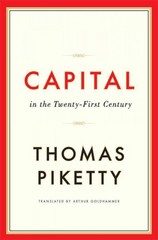Hey I'm having some trouble with this question, help would be great, thanks in advance.
In April 2019, an author noted that "The Canadian economy is getting really close to full employment. The R8 rate, which includes involuntary part-time and discouraged workers, fell from 9.0 percent in March to 8.3 percent in April." a. What are discouraged workers? O A. People who are just out of high school or college who did not get a job right away O B. People who leave a job and cannot find a new job in that same field and are then forced to switch fields O C. People who do not accept a new job because they do not get the wage they want O D. People who are available for work but have not looked recently because they believe no jobs are available for them Why do economists and policymakers track changes in the number of discouraged workers as part of thinking about unemployment? A. The official measure of the unemployment rate may understate the true extent of joblessness in the economy. O B. The official measure of unemployment may discourage employers from hiring workers. O C. The official measure of the unemployment rate may overstate the true extent of joblessness in the economy. O D. Policymakers prefer the broader R8 measure so that joblessness cannot be blamed on the government. b. What does it mean when economists say the economy is at full employment? O A. There is no cyclical unemployment; the only remaining unemployment is structural and frictional. O B. Everybody who wants a job has been able to find a job; there are no discouraged workers. O C. The number of jobs created is greater than the number of jobs eliminated. O D. There is no unemployment; that is, the unemployment rate is zero. If the Canadian economy was close to full employment in April 2019, why would the unemployment rate including involuntary part-time and discouraged workers (known as R8 in Statistics Canada data) still be as high as 8.3?If the Canadian economy was close to full employment in April 2019, why would the unemployment rate including involuntary part-time and discouraged workers (known as R8 in Statistics Canada data) still be as high as 8.3? O A. There must have been a larger decrease in the size of the labour force relative to the decrease in the number of unemployed. O B. This would have occurred if some people falsely reported that they were actively working when they weren't. O c. Even at full employment, there were many discouraged workers and part-time workers who wanted full-time jobs. 0 D. The R8 measure was incorrect: When an economy is close to full employment, the unemployment rate should be about4 percent








